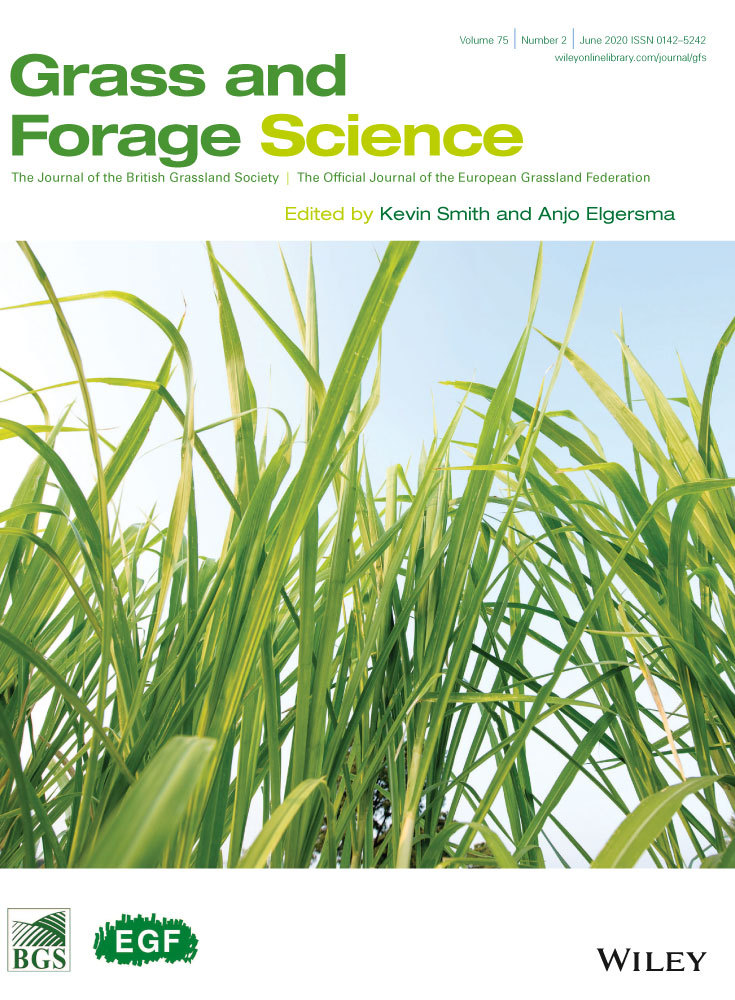Ver ítem
- xmlui.general.dspace_homeCentros Regionales y EEAsCentro Regional Buenos Aires SurEEA BalcarceArtículos científicosxmlui.ArtifactBrowser.ItemViewer.trail
- Inicio
- Centros Regionales y EEAs
- Centro Regional Buenos Aires Sur
- EEA Balcarce
- Artículos científicos
- Ver ítem
Animal and forage responses on lucerne (Medicago sativa L.) pastures under contrasting grazing managements in a temperate climate
Resumen
This study determined the impact of a change in grazing system on beef production from lucerne pastures in Argentina. One system (T500) used the traditional recommendation to commence grazing in spring when lucerne was near to 10% flowering. The grazing interval was ~ 500 growing degree‐days (GDD; above a base temperature for growth of 5°C) from mid‐spring to mid‐autumn. In contrast, the T350 system commenced grazing 11–15 days earlier at ~ 1,000 kg DM/ha
[ver mas...]
This study determined the impact of a change in grazing system on beef production from lucerne pastures in Argentina. One system (T500) used the traditional recommendation to commence grazing in spring when lucerne was near to 10% flowering. The grazing interval was ~ 500 growing degree‐days (GDD; above a base temperature for growth of 5°C) from mid‐spring to mid‐autumn. In contrast, the T350 system commenced grazing 11–15 days earlier at ~ 1,000 kg DM/ha and the grazing interval was ~ 350 GDD from mid‐spring to mid‐summer, and from mid‐summer to mid‐autumn, it was ~ 500 GDD. Total live‐weight production was ~ 30% or 185 and 115 kg/ha higher in T350 than T500 in Years 1 and 2 respectively. This was due to a higher live‐weight production per head and a higher stocking rate, because T350 produced 1,600 kg DM ha−1 year−1 more forage. Plant population (~70 plants/m2) and perennial biomass (root plus crown) at the end of the second year did not differ between treatments. This suggests that lucerne persistence was not affected by the more intensive spring grazing of T350, because an adequate period of autumn recovery was allowed. This work quantified the live‐weight gain (+30%, +150 kg/ha) when the grazing management of lucerne during the spring–summer period was based on crop growth status (i.e. standing biomass, canopy height) rather than on crop phenology.
[Cerrar]

Autor
Berone, German Dario;
Sardiña, María Cecilia;
Moot, Derrick;
Fuente
Grass and Forage Science 75 (2): 192-205 (2020)
Fecha
2020-06
Editorial
Wiley
ISSN
1365-2494
Formato
pdf
Tipo de documento
artículo
Palabras Claves
Derechos de acceso
Restringido
 Excepto donde se diga explicitamente, este item se publica bajo la siguiente descripción: Creative Commons Attribution-NonCommercial-ShareAlike 2.5 Unported (CC BY-NC-SA 2.5)
Excepto donde se diga explicitamente, este item se publica bajo la siguiente descripción: Creative Commons Attribution-NonCommercial-ShareAlike 2.5 Unported (CC BY-NC-SA 2.5)

